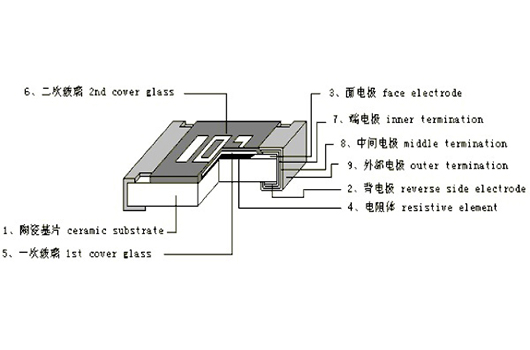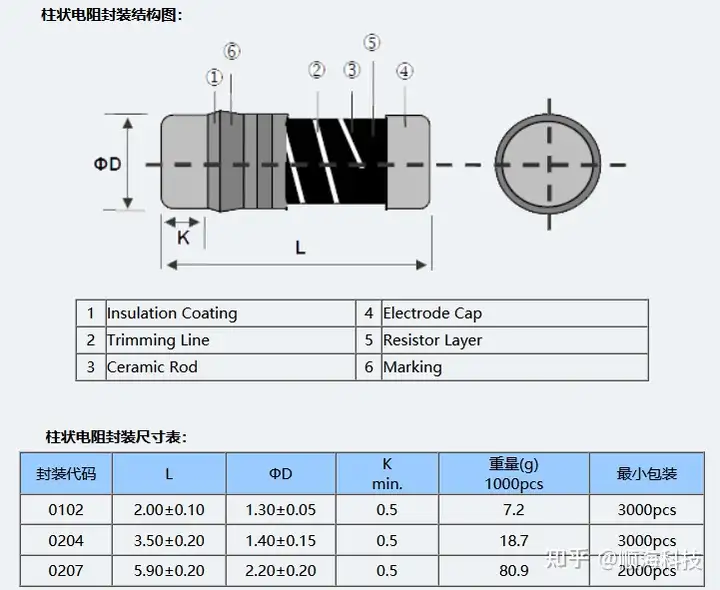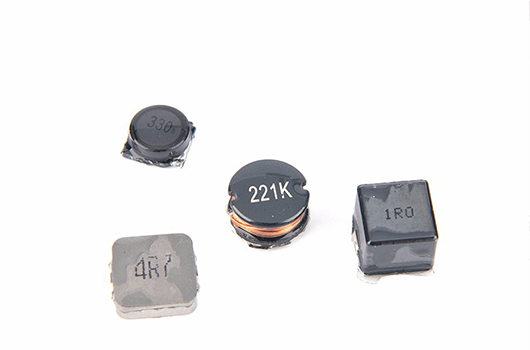
As we all know, patch resistor, also known as chip type fixed resistor, is a kind of metal glass glaze resistor. It is a resistor made of metal powder and glass glaze powder mixed and printed on the substrate by screen printing. It has the advantages of small volume, light weight, high installation density, strong shock resistance, strong anti-interference ability, humidity and high temperature resistance, less temperature coefficient, good high-frequency characteristics, etc. Widely used in electronic communications, automotive electronics, medical equipment, high-end audio, instruments and meters, etc.
However, what are the types of patch resistance shapes? Presumably we are not very familiar with it, in fact, the shape of the patch resistance can be divided into rectangular shape, cylindrical shape, special-shaped shape, according to the type of resistor, capacitor, inductor, transistor and small integrated circuit. And Xiaobian roughly collate data written to share with you as follows.
Patch resistance shape
1. rectangular resistance is also called patch shape resistance, its structure can be divided into substrate, electrode, resistance film, protective layer made of the following explanatory structure description and rectangular resistance diagram.

(1) Substrate: The substrate should have good electrical characteristics of G8P-1A4P DC12 edge, thermal conductivity and high mechanical strength. Generally, high purity (96%) AL203 ceramics are used for substrate materials. The process requires smooth surface and accurate marking to ensure that the resistance and electrode paste are printed in place;
Electrode (2) : chip resistors are generally adopts three layer electrode structure, is the innermost inner electrode, it is connected to the resistor body is located in the middle tier is the intermediate electrode, it is plated nickel (Ni), also known as barrier layer, its main function is to improve the resistor when soldering heat resistance, avoid to cause the inner electrode by dissolution. Located at the outermost layer is the outer electrode, which is also known as the weldable layer, which in addition to making the electrode good weldability, can also play a role in extending the electrode shelf life. Usually, the outer electrode is tin - lead (S. -Pb) alloy electroplating;
(3) the membrane resistance: resistance film is used with a range of resistivity of resistor paste printed on ceramic substrate, and then after sintering and into the thick film resistor;
(4) Protective layer: the protective layer is located outside the resistance film, mainly plays a protective role. It can usually be subdivided into encapsulation glass protective film, glass glaze coating and mark glass layer. Among them, the encapsulation glass protective film is directly covered on the resistance film, which is generally made of glass paste with low melting point, printed and sintered. He plays a role of protection on the one hand, on the other hand, the insulation effect, to avoid the resistor and the adjacent fault caused by contact between a conductor or circuit. In addition, the protective layer can also prevent the corrosion and damage of the electroplating solution to the resistance film in the process of electroplating intermediate electrode;
2. cylindrical resistance, also known as wafer resistance, leadless resistance, pin resistance, color ring resistance, etc., is a resistance component mainly used in the surface mounting process of wafer leadless resistance and wafer (patch) resistance, also surface mounted components, wafer resistance in function, mechanical structure, electrical characteristics, safety, is obviously better than the patch (chip) resistance. And the noise is lower than thick film resistor. Cylindrical MELF resistors are mainly used in power type/high voltage impact type/precision type/high level circuits with high safety requirements. The following figure is a cylindrical shape resistance structure.

3. Different shapes, also known as sampling resistors, sampling resistors and press foot type mangano-copper resistors, are made of alloy and mangano-copper, with shapes such as door, U, M, spring, S, L, linear, etc., which mainly have low resistance temperature coefficient, wide service temperature range (below 480℃), good processing performance, and good welding performance. It is widely used in the production of instruments, electronics and electronic components in industrial equipment. It is also a kind of resistance which belongs to the patch resistance, but the shape is larger but the resistance range of 1 milliohm -200 milliohm can be selected.

The above content mainly introduce the rectangular and cylindrical shape, different shapes, three kinds of SMD resistor.
-

Battery Maker CATL Tops 1 Tril
Yes, each step of production and finished products will be came out inspection b...
2021-09-07 view+ -

3921 resistors and 5931 resist
A few days ago, oswell announced that it has launched two new surface mount resi...
2023-05-08 view+ -

Size code for the SMD resistor
The most widely used size codes for patch resistors are 0805 and 1206. Moreover,...
2023-03-20 view+ -

Precision shunt resistors gene
The device that measures current in a circuit is called an ammeter, and most mod...
2023-04-26 view+


